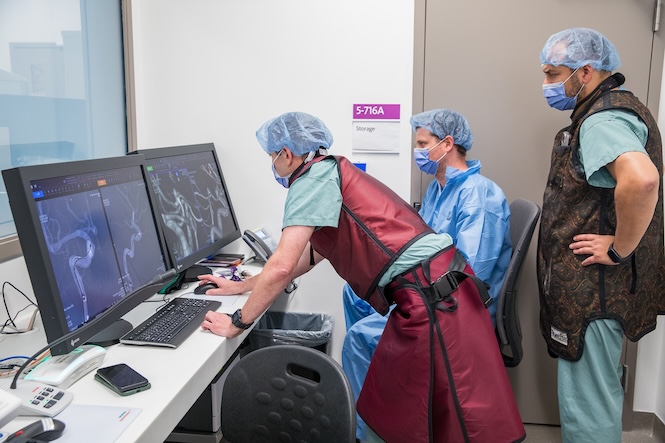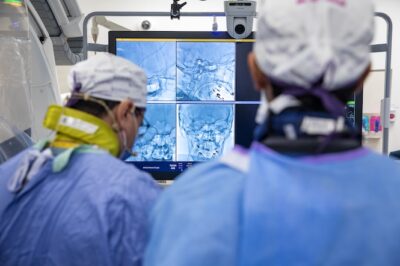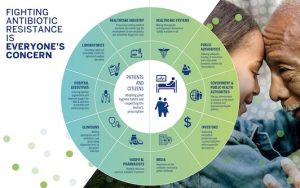A Breakthrough in Neurosurgery: St. Michael’s State-of-the-Art Hybrid Biplane OR

With the support of donor funding, St. Michael’s Hospital has opened a state-of-the-art hybrid biplane operating room for advanced neurovascular procedures. The first-of-its-kind in Canada, Operating Room 19 (also known as ORX) features the combined functionalities of a hybrid operating room with the advanced imagining technologies of a radiological suite.
ORX gives clinicians the ability to perform multiple procedures or surgeries at the same time, while having access to real-time, high-resolution imaging from two different X-ray machines to guide their work. This combination will allow for greater efficiency and patient safety, says Dr. Vitor Mendes Pereira, neurosurgeon at St. Michael’s and Schroeder Chair in Advanced Neurovascular Interventions.
“This hybrid biplane operating room offers the possibility of doing a full range of neurovascular procedures, including minimally-invasive and endovascular. It also opens up the possibility of doing open surgeries and minimally-invasive surgery combined,” he says.
Before ORX opened, if a patient required multiple specialized interventions, they would usually be performed separately and in different parts of the hospital. This workflow requires extra time and planning to prepare and transfer patients – many who are in critical condition. Now, with the hybrid biplane operating room, the patient doesn’t need to leave the OR, and clinicians can provide both interventions in one session, he says.
For example, for certain cancer patients, clinicians in ORX can reduce the blood flow to a patient’s tumour, allowing a surgeon to immediately remove it with less bleeding. Previously this pre-surgical procedure would have to be done separately from the actual tumor removal, requiring additional time and resources, Pereira says. ORX could also accommodate trauma patients who require multiple surgeries, eliminating the need for intra-hospital transfers, he says.
This more efficient operating room will allow for better mapping and planning of care for complex patients, says Pereira.
“ORX was designed to have many different specialties working in the room together, including surgery, trauma, cardiac, oncology and medical imaging. This will reduce the number of procedures for patients and ultimately be safer,” he says. “We have a very unique set up. There is no other facility like this in Canada.”
Director of Medical Imaging Jeff Kerk says having integrated imaging technology built directly into the operating room is a game changer.
“This innovation allows for real-time, high-resolution imaging during surgical procedures, ensuring that surgeons have the most accurate information at their fingertips. The result is greater surgical precision, shorter operative times, and ultimately, better outcomes for our patients,” Kerk says.
“The Medical Imaging team is excited to be a part of this transformative step forward in healthcare delivery, with advanced medical radiation technologists and interventional registered nurses providing essential technical, diagnostic, and clinical support.”

Integrated robotics
ORX is being set-up to support the latest telerobotic systems, which will allow the St. Michael’s team to further their research on robotic-assisted surgery, says Neurovascular Research Program Manager Nicole Cancelliere.
Cancelliere, who co-leads the RADIS Lab and was part of the team that performed the world’s first robotic neurovascular intervention in 2019, says local robotics has shown many benefits to date, including increasing surgical precision and safety, helping to reduce surgeon fatigue and decreasing staff exposure to the radiation emitted from X-ray machines.
The innovative work of RADIS Lab in ORX will allow our surgeons to one day treat patients in another hospital using telerobotics, she says.
“Remote robotic neurovascular surgery will allow faster treatment of patients in remote communities, suffering from time sensitive diseases, such as stroke, which can have a significant impact on improving patient outcomes,” Cancelliere says.








